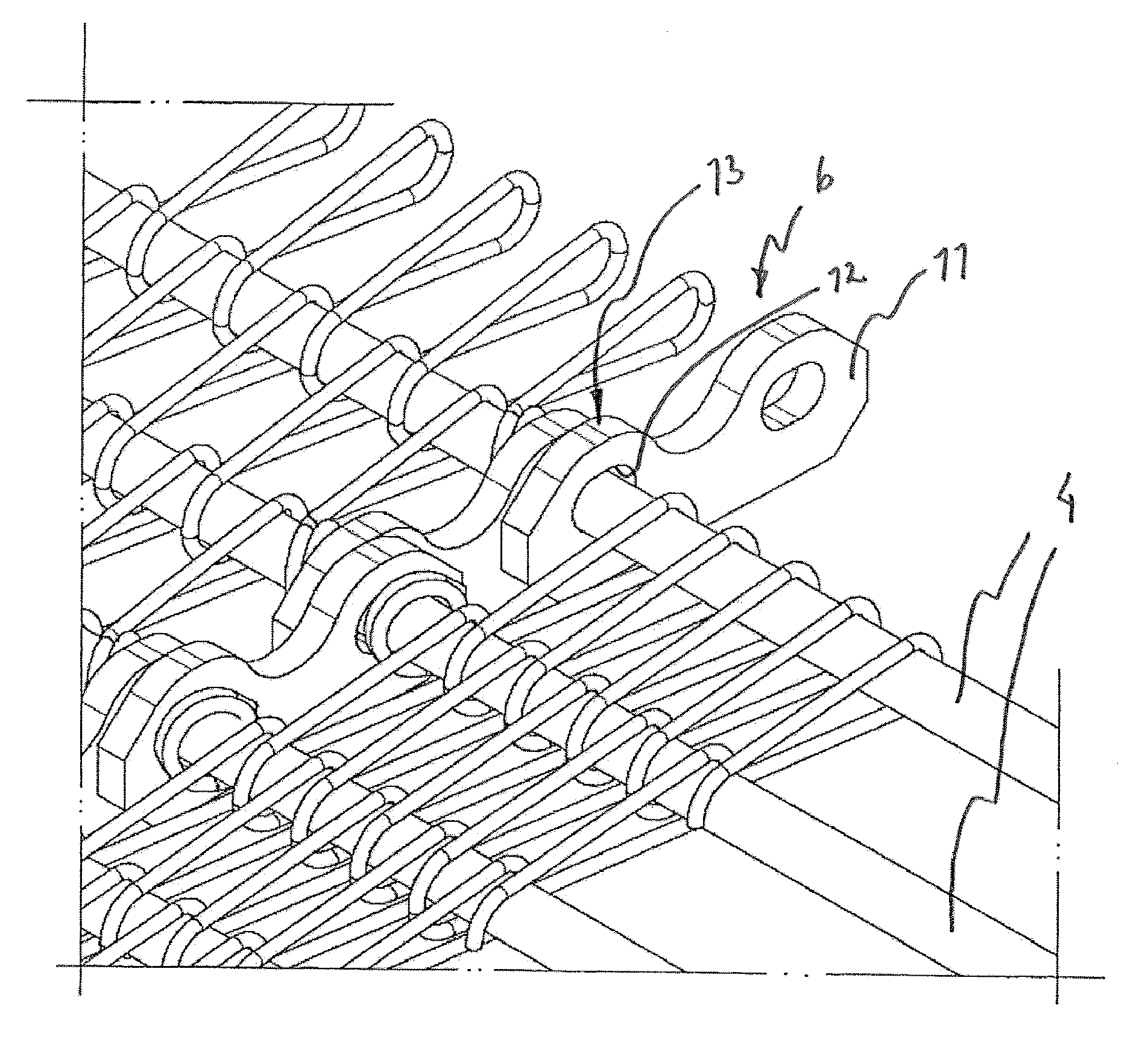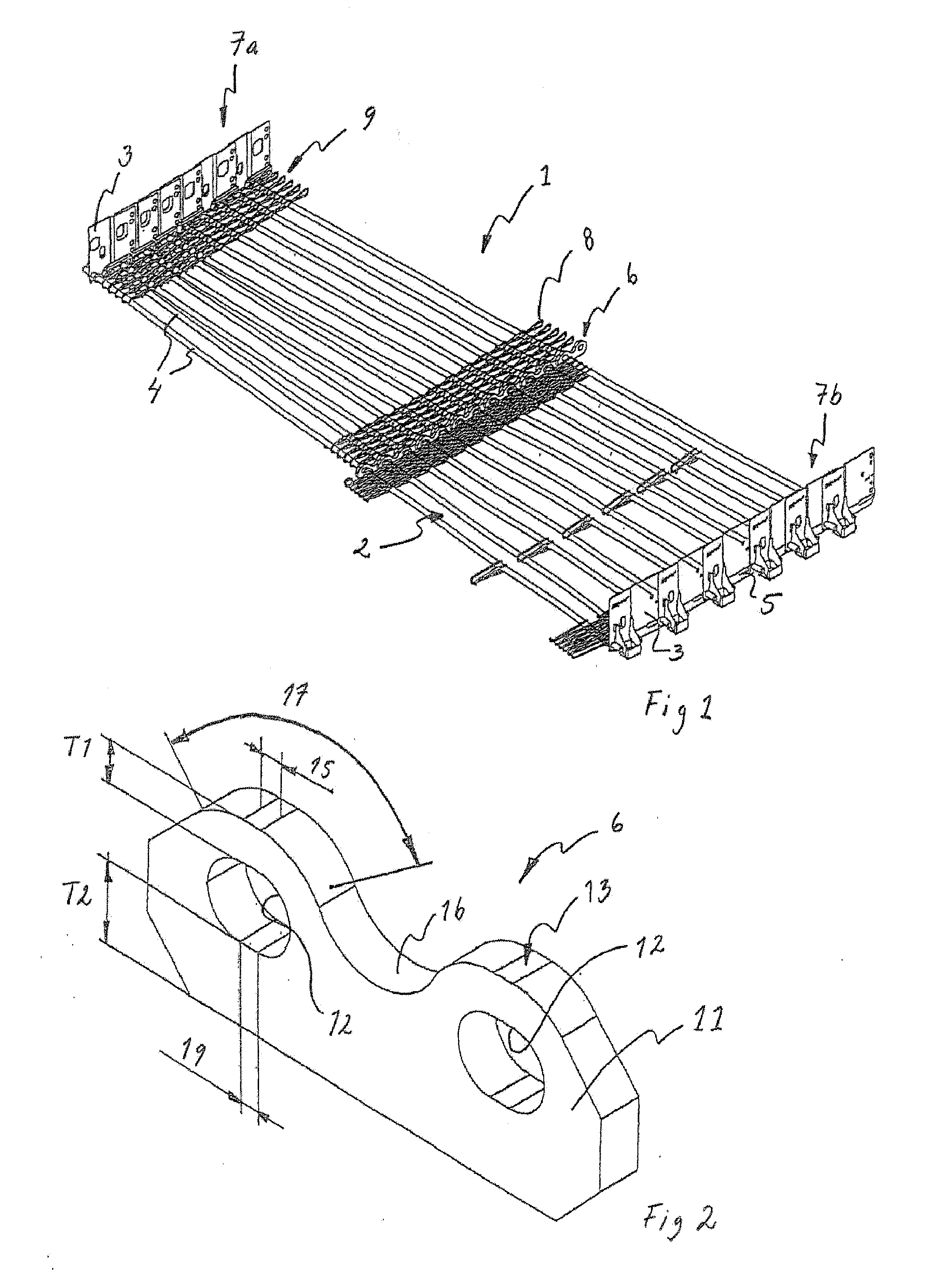Conveyor belt
a conveyor belt and belt technology, applied in the direction of belt/chain/gearing, driving chain, chain element, etc., can solve the problems of conveyor belt breakdown, conveyor belt area reduction, and inability to use as smooth as desired, so as to achieve strong linkage, reduce the effect of belt breakdown, and high reliability in operation
- Summary
- Abstract
- Description
- Claims
- Application Information
AI Technical Summary
Benefits of technology
Problems solved by technology
Method used
Image
Examples
Embodiment Construction
[0026]In FIG. 1, to which reference now is made, illustrates a section of a conveyor belt 1 in accordance with the invention.
[0027]The conveyor belt 1 may be used for an air conditioning plant, in which the conveyor belt 1 is endless and extends helically along part of its length. The conveyor belt 1 can be intended for conveying of foodstuffs, which will be chilled, frozen or cooked when conveyed through the air conditioning plant.
[0028]However, it will be appreciated that the inventive conveyor belt 1 can also be used for other applications than air conditioning plants.
[0029]The conveyor belt 1 comprises a plurality of successive belt elements 2, which each have two lateral side members 3 and two rods 4 extended between and fixedly connected to the side members 3. This structure results in a relatively rigid frame structure, giving the conveyor belt a good load-bearing capacity.
[0030]The conveyor belt 1 may be supported or of a wholly, or partly, self-supporting type.
[0031]By a se...
PUM
 Login to View More
Login to View More Abstract
Description
Claims
Application Information
 Login to View More
Login to View More - R&D
- Intellectual Property
- Life Sciences
- Materials
- Tech Scout
- Unparalleled Data Quality
- Higher Quality Content
- 60% Fewer Hallucinations
Browse by: Latest US Patents, China's latest patents, Technical Efficacy Thesaurus, Application Domain, Technology Topic, Popular Technical Reports.
© 2025 PatSnap. All rights reserved.Legal|Privacy policy|Modern Slavery Act Transparency Statement|Sitemap|About US| Contact US: help@patsnap.com



